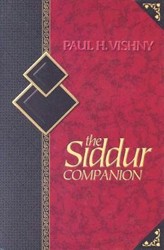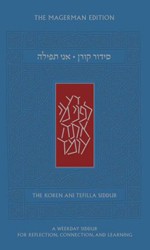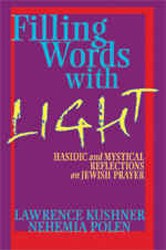A recent study found that the younger generation of Reform Jews was more comfortable with Jewish ritual than their elders. The new Reform prayer book, Mishkan T’filah, speaks to this trend. Every generation needs to create its own prayer book to express, in its own idiom, its unique relationship with God. This volume is addressed to those living at the beginning of the 21st century and reflects the desires of clergy and laypeople dedicated to including more Hebrew; meeting the needs of a diverse population; having a clear and uncluttered presentation, and increasing the use of traditional, as well as new, liturgy. It reflects the values of this generation: the desire to be “polyvocal” rather than univocal and the need to retain choice as a primary element while at the same time attempting to create one community.
Gates of Prayer, published in 1975, stands as a testament to a time in which personal choice was the operative principle. Rabbis and prayer leaders were free to select, for example, from among ten Sabbath evening services or six Sabbath morning services. By contrast, Mishkan T’filah offers only two options for evening and morning — and neither of these two reflects the exceptionally wide range of theology present in Gates of Prayer.
Of prime importance in the new siddur is the value of inclusiveness. First of all, the transliteration of every prayer is formatted directly opposite the Hebrew, with the translation placed underneath both. The sheer increase in quantity of Hebrew stands in stark contrast to the Union Prayer Book and Gates of Prayer. The fact that this volume opens only in the Hebrew direction is a further indication of the growing primacy of Hebrew in the Reform movement. Second, worshippers who do not know how to read Hebrew can turn to the transliteration of every prayer, where verbal recitation, singing, or silent worship is available to all. Third, in order to balance the primary status accorded to the text in either Hebrew or its transliteration or translation, the facing page strives to provide modern meaning and possible applications to the classic texts. The translations are often not literal and the facing page is a welcome expansion of the Readings and Special Themes sections of Gates of Prayer and are, in fact, more appropriately located here.
As for layout and format, the siddur, while heavy to hold, is all encompassing, including Shabbat, weekday, festival, and sacred occasions, as well as home and synagogue observances, making it a more comprehensive single volume than the “Gates” series. Each individual prayer is by and large restricted to one page. There is a nice effort made to balance the tension between what is constant and repeated in each service with the desire to bring something fresh to its expression. This is accomplished with the Shma, for example, by laying out the prayer in a half-circle over two pages in each service in which it is recited, repeating some elements and adding new ones. To make the service slightly easier to follow, each page has margin notes containing the order of that particular service with the location in boldface.
Regarding the text itself, there is much that is new in Mishkan T’filah that was absent in Gates of Prayer (and certainly in the Union Prayer Book). The inclusion, for example, of ‘reviving that which is dead,’ albeit in parentheses to ‘giving life to all,’ stands as a rather prominent return to the ancient text. More startling is the inclusion of the Ten Commandments, reflecting a return to an ancient practice abandoned for generations. The framing of the Yom HaShoah, Yom Ha’atzmaut, Chanukah, and Purim services as liturgical insertions is in keeping with the intent of the blessings. The welcome addition of the Sephardic greeting, “May God be with you,” and the congregational response “May God bless you,” is wonderful. Some prayers continue to be omitted, for example, the second paragraph of the Shma, while others, such as the introduction to the priestly blessing, are modified.
Undoubtedly, some will critique the decision to offer two services rather than one. Others might object that the font is too modern, or that the attributions should have been listed with the readings rather than at the end. The sheer weight might be difficult for some, but the desire to provide a complete service rather than requiring worshippers to continuously turn pages to skip was the result, I am sure, of extensive deliberation and conscious choice.
I wish the authors had focused a bit more on how each prayer works rather than only on what it means. Texts such as ‘ma tovu’ are responses to often hidden questions of identity, feeling, and emotion. Perhaps a companion essay — beyond those provided in the introduction and on the Union for Reform Judaism’s website— might contribute to understanding why certain choices were made.
Evolution from Union Prayer Book to Gates of Prayer to Mishkan T’filah is obvious simply from the titles of the three Reform prayer books: from English to Hebrew, from unity to choice, and a progression from a prayer book to a siddur.
Yasher kochachem!
Note: The reviewer is a member of the CCAR and of the committee of the Rabbinical Assembly, which is creating a new mahzor for the Conservative movement.





